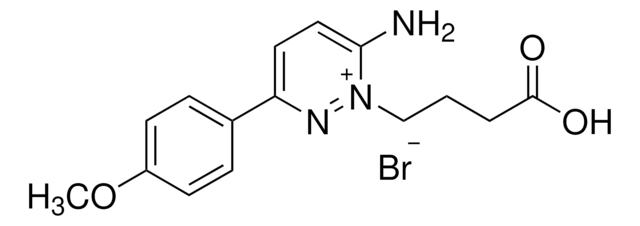T200
(1,2,5,6-Tetrahydropyridin-4-yl)methylphosphinic acid hydrate
≥97% (HPLC), solid
Synonim(y):
TPMPA hydrate
About This Item
Polecane produkty
Próba
≥97% (HPLC)
Postać
solid
kolor
white to off-white
rozpuszczalność
H2O: 16 mg/mL
DMSO: insoluble
ciąg SMILES
[H]O[H].CP([O-])(=O)C1=CC[NH2+]CC1
InChI
1S/C6H12NO2P.H2O/c1-10(8,9)6-2-4-7-5-3-6;/h2,7H,3-5H2,1H3,(H,8,9);1H2
Klucz InChI
GXVWAQPRAQORGS-UHFFFAOYSA-N
Zastosowanie
Działania biochem./fizjol.
Cechy i korzyści
Uwaga dotycząca przygotowania
Informacje prawne
Kod klasy składowania
11 - Combustible Solids
Klasa zagrożenia wodnego (WGK)
WGK 3
Temperatura zapłonu (°F)
Not applicable
Temperatura zapłonu (°C)
Not applicable
Środki ochrony indywidualnej
Eyeshields, Gloves, type N95 (US)
Certyfikaty analizy (CoA)
Poszukaj Certyfikaty analizy (CoA), wpisując numer partii/serii produktów. Numery serii i partii można znaleźć na etykiecie produktu po słowach „seria” lub „partia”.
Masz już ten produkt?
Dokumenty związane z niedawno zakupionymi produktami zostały zamieszczone w Bibliotece dokumentów.
Klienci oglądali również te produkty
Nasz zespół naukowców ma doświadczenie we wszystkich obszarach badań, w tym w naukach przyrodniczych, materiałoznawstwie, syntezie chemicznej, chromatografii, analityce i wielu innych dziedzinach.
Skontaktuj się z zespołem ds. pomocy technicznej








